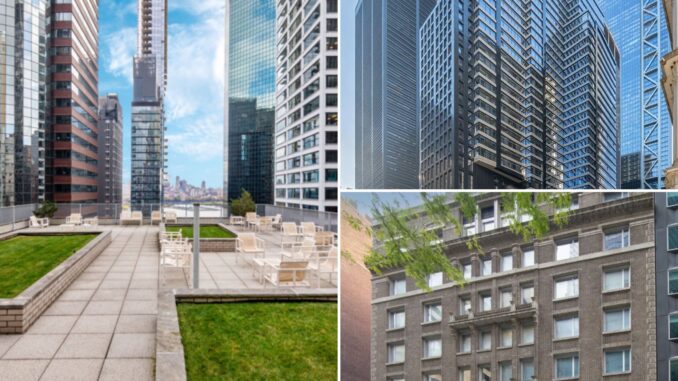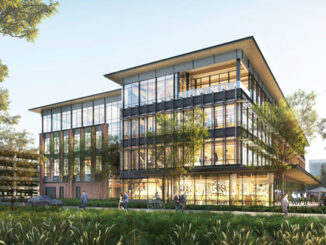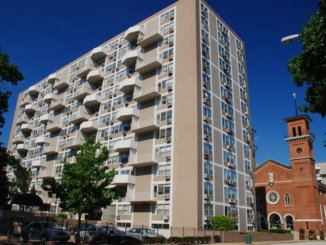
What is the owner of a Manhattan office tower to do in the age of work-from-home? Hotel or residential conversions are complex and costly. Building renovations that add amenities in hopes of luring top tenants are expensive and may not even work. But for those left holding the bag, there is another way out: the office condominium.
Creating office condos within a property allows the building to be sold one floor at a time. They can add value — but they also take time.
Each individual floor of an office condo sells for more on a per-square-foot basis than if the building was sold as one unit, said Michael Rudder of Rudder Property Group, and over 90% of such floors are purchased by owner-occupiers.
Rudder, whose company specializes in helping building owners navigate the process, said the current sales market ranges from $500 to $850 per foot.
“The ones that are $500 per foot are in buildings that would sell for $200 a foot,” he said. “While office condo pricing is way down — by 30% to 50% — it’s still much higher than what office buildings are selling for.”
Six recent full-building sales achieved average pricing of $396 per square foot, while the average price per square foot for six recent office condominium sales was $726 per square foot — a remarkable 83% premium over office building sales. As an example of this lower pricing, Rudder pointed to the sale of the entire small office building at 6 E. 45th St., just a few steps from Fifth Avenue. It has 79,290 square feet and sold for $338 per foot earlier this year and included an occupied ground-floor retail space.
For office condo investors, one of the benefits is that they are managed by a third party.
“I pay my common charges and taxes and my tenants pay me,” said Rudder, who owns several. “I go there once a year.”
If the original cost basis plus the professional fees to convert are less than $300 per foot, it may make sense to convert if there is no other exit strategy, agreed Adelaide Polsinelli of Compass. But she warned: “There are few office condo buyers in the market today unless the price is extremely attractive.” Instead, Polsinelli believes selling the whole building at once is faster and less expensive. “It is best to cash out and redeploy that capital into a new deal,” she added.
“You sell off a block and you pay down debt and you live to see another day.”
To pursue an office condominium, it takes roughly six to 12 months working with accountants, architects and attorneys to create the proper documents and have the plan approved by the New York State attorney general’s office. The legal and architectural expenses run around $200,000, Rudder said.
Nevertheless, the current stress on the real estate market will lead to more conversions of office condos, he predicts.
The buyers of office floors often include small businesses, especially those run by non-US-born operators. Not-for-profits and foreign countries are also regular buyers of their offices and waive diplomatic immunity when making the purchase.
“They buy properties for all cash and have been a wonderful part of the office market and New York economy,” Rudder said of the countries.
One offering being marketed by Rudder for $9.10 million is a full-floor office condominium with 18,201 square feet at 125 Maiden Lane in Lower Manhattan. The building has a roof-deck and a full gym with showers for tenants.
Rudder has numerous other offerings, including 28,703 square feet across three floors in the base of the new tower at 185 Broadway that can be sold separately for $495 per foot, per floor, or all for about $14.3 million. It also comes with a 35-year tax abatement.
Another of Rudder’s offerings is a small medical office of 2,587 square feet at 110 E. 40th St. for $1.4 million.
Office condo owners are responsible for both common charges and property taxes. But non-profits and foreign countries may apply to the city’s Department of Finance for permission to waive their real estate taxes and certain other charges.
Owner-occupying buyers can also obtain loans from the Small Business Administration (SBA) — a lending source not available to those buying office buildings they won’t occupy — and such loans have a default rate of less than 3%, Rudder said.
While the maximum loan size between the SBA and a traditional lender cannot exceed $14 million, borrowers can take out multiple loans at the same time for different projects, raising their maximum amount to $20 million. The current building owners don’t have to sell all the floors, either.
“You sell off a block and you pay down debt and you live to see another day,” said Rudder.
Real Estate – Latest NYC, US & Celebrity News



